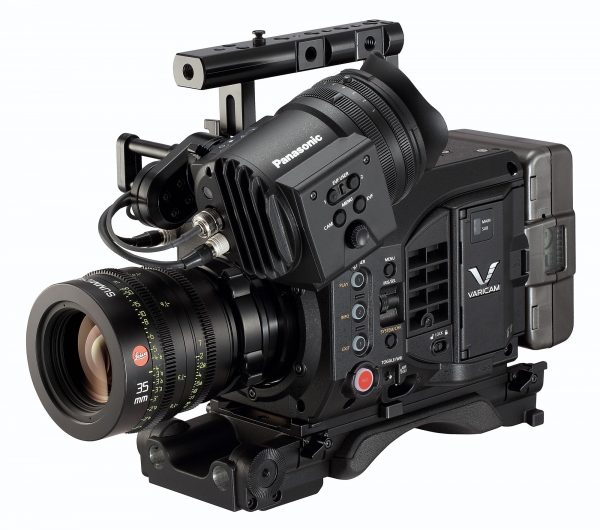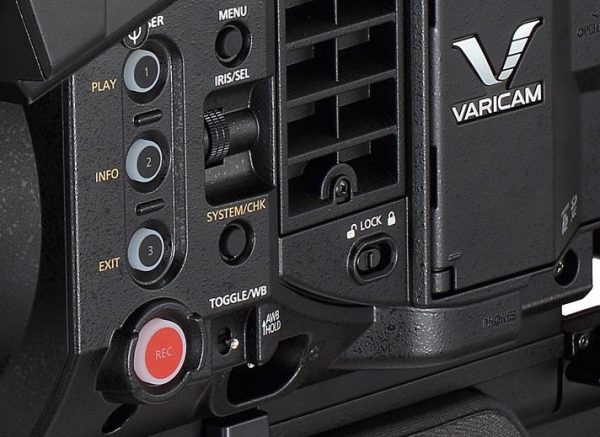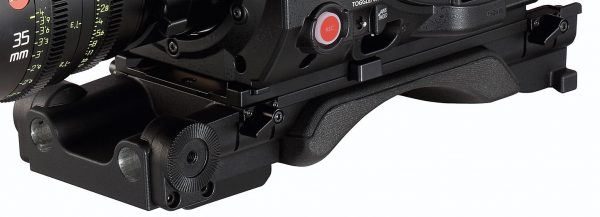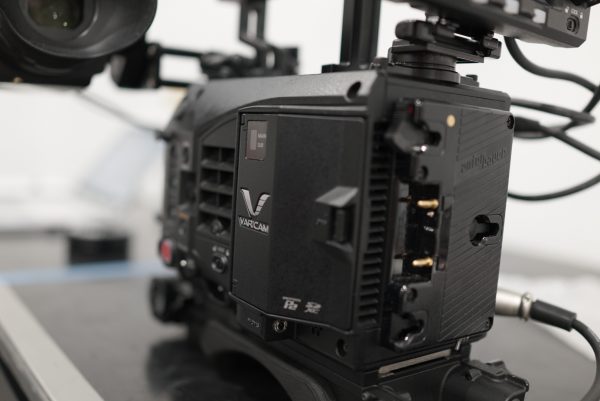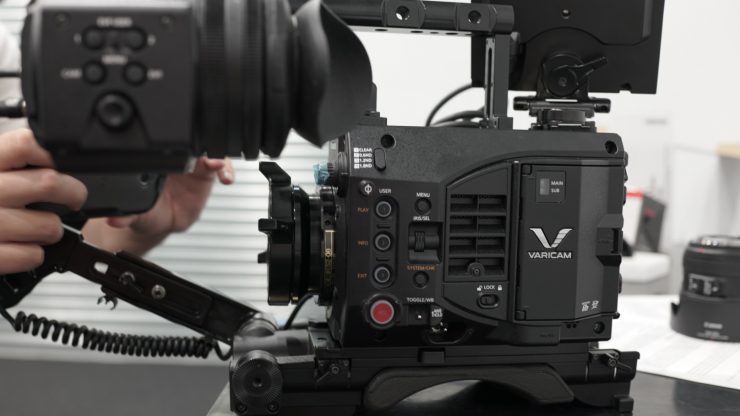
The Panasonic Varicam LT is a lighter weight, more compact version of the Varicam 35 with a unibody design (The Varicam 35 comes as a two part camera with the option for two different camera heads). It has built-in ND filters (clear, 0.6, 1.2 and 1.8 strength) and interestingly has an Canon EF lens mount fitted as standard instead of the PL mount found on the Varicam35. A optional PL mount is also available. It will be possible to change between the two mounts on the new camera, just like you can with the Arri Amira and Alexa Mini. Panasonic tell me that you will also be able to use B4 mounts from 3rd party manufacturers. You can adjust the iris of EF lenses via a scrolling button on the side of the camera or on the the optional grip and arm. Panasonic is quick to point out that they can’t guarantee the compatibility or performance of all EF lenses.
Shot on VariCam LT: "To Each His Dulcinea" from Cinema VariCam™ on Vimeo.
The camera body weighs in at 2.7kg (5.15lb) which is almost half the weight of the Varicam 35 (5kg). To put this into comparison the Sony F5/55 weighs in at 2.2kg, URSA Mini 2.3kg and the Arri Alexa Mini is 2.3kg.
It has the same Super35 4K sensor as the larger Varicam35, which has a claimed 14+ stops of dynamic range, as well as a greater than BT-2020 colour space. It also features the same unique dual-native ISO function (800 and 5000) that delivers some impressive results in low light. It ships with a detachable control panel that can be used by an assistant to control the camera while it is on your shoulder. The new Varicam LT is also HDR ready. One of the main differences between the Varicam 35 and Varicam LT is that the LT can’t record 4K @ 120fps in RAW, or 4K ProRes 4444.
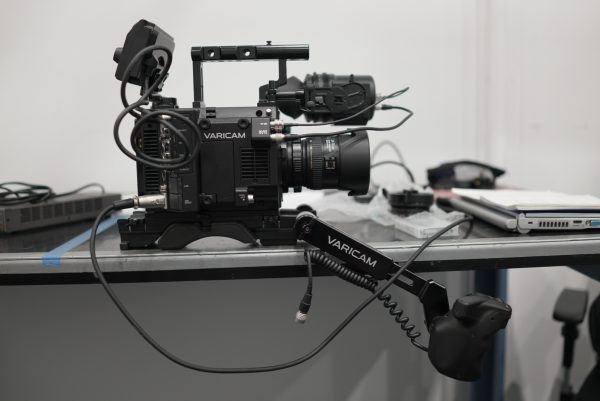
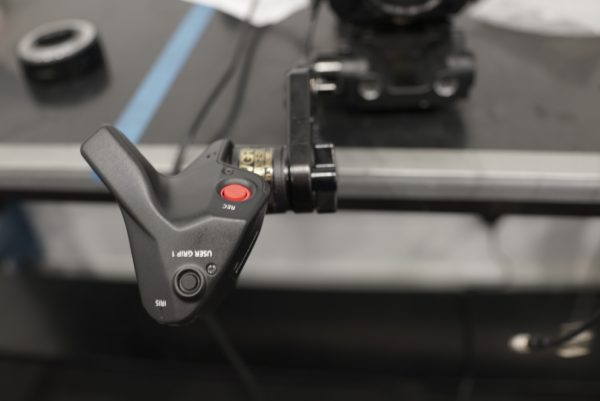
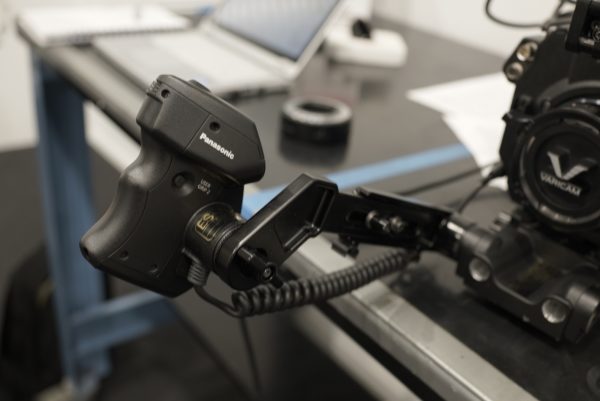
The smaller design should be well suited to handheld work – factual and documentary shooters are clearly part of the target market. From the outside the camera body looks very reminiscent of the Blackmagic Design URSA Mini. The body is made of a magnesium material and should be durable. In terms of size and specifications comparisons will be drawn with the ARRI Alexa Mini, Amira and Canon’s C300. It should lend itself well to use on Steadicams, gimbals and on jibs. Optional accessories include a newly designed shoulder pad and grip with trigger, iris control and user assignable button. The shoulder pad gives a huge amount of travel so that the camera can be comfortably balanced with almost any commonly used lens/battery combination.
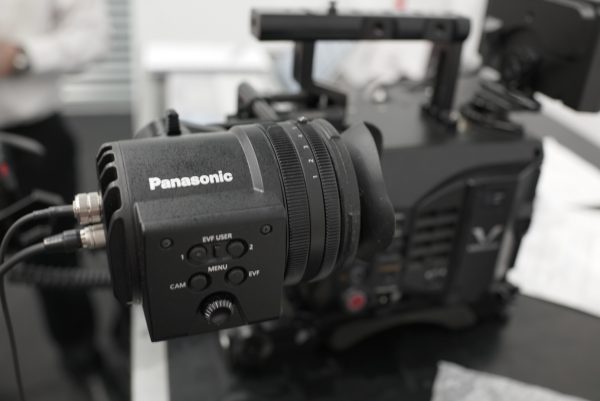
According to Panasonic, the concept was to make a cost effective base camera that the user then adds what is required. We are aiming the camera at mid range production, owner operator, TV production, documentary, and wildlife shooters. We also provide a high quality EVF as an option but have designed the camera so that many third party EVFs can be used as well. The optional EVF includes an optical zoom function, focus assist, as well as anamorphic lens de-squeeze.
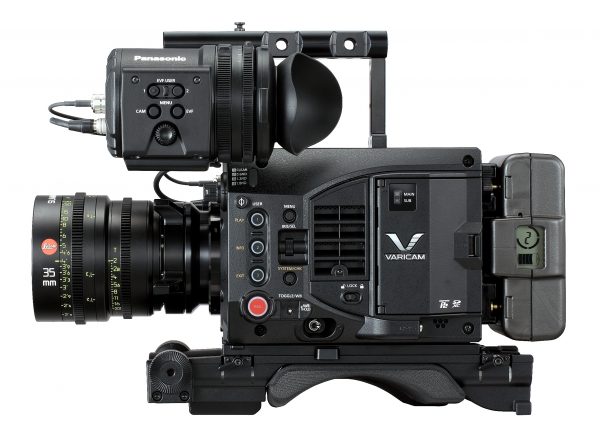
The majority of codecs in the Varicam LT are the same as the Varicam35/VaricamHS so there is already compatibility with commonly used editing and post systems. It can record 4K and UHD Apple ProRes at up to 30p and HD in various ProRes flavones including ProRes 4444 up to 60p. Also onboard are Panasonic’s own AVC-ULTRA codecs, favoured by some broadcasters. These include newly introduced AVC-Intra LT and AVC-Intra 2K-LT, which can capture high frame rates up to 240fps in imager crop mode. RAW recording via SDI is planned as a firmware upgrade in summer 2016. Convergent Design will support the Panasonic VariCam LT digital cinema camera’s Raw file format.
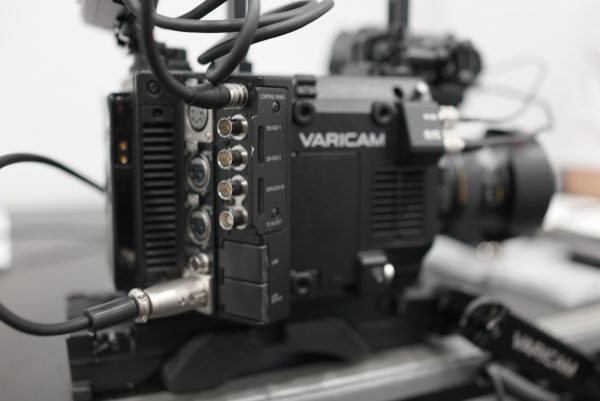
Professional interfaces include: 3G-HD-SDI x 3 (SDI-OUT X 2 and VF), LAN, genlock in, timecode in/out, USB2.0 Host and USB2.0 Device (mini B), and three XLR inputs (one 5-pin, two 3-pin) to record four channels of 24-bit, 48KHz audio. There is also record functions (PreRec, interval, one-shot), IP control via Panasonic’s AK-HRP200 camera remote controller, and built-in GPS.
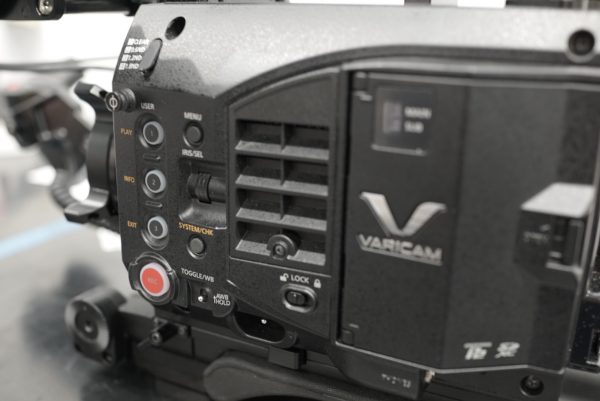
Colour management is one key area that Panasonic have been working hard on. The new camera has Varicam’s V-Log with extended colour gamut and support for the ACES workflow. In-camera colour grading is carried over from the Varicam35 and you can record an ungraded 4K master alongside the metadata for the look you created on set. One interesting option for documentary shooters is the addition of V-LOOK, a halfway house between V-Log and REC.709 video. The idea is that it should enable a filmic look without the need for intensive colour grading.
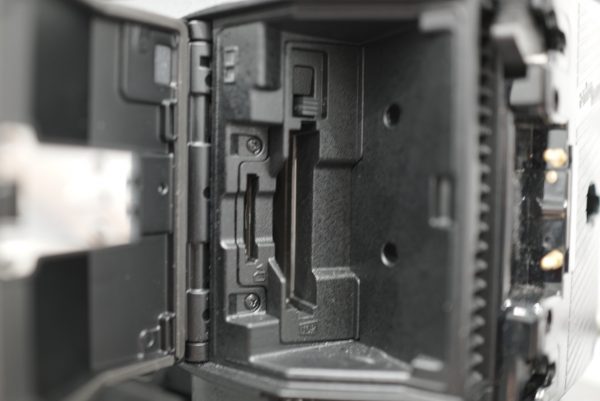
The Varicam LT has a single expressP2 card for HD/2K/UHD and 4K recording, and one 256Gbyte expressP2 card can record up to 90 minutes of 4K/4:2:2/23.98p. The camera can also record proxy files to an SD card. These proxies can be wirelessly uploaded via FTP which can facilitate on-set wireless colour grading.
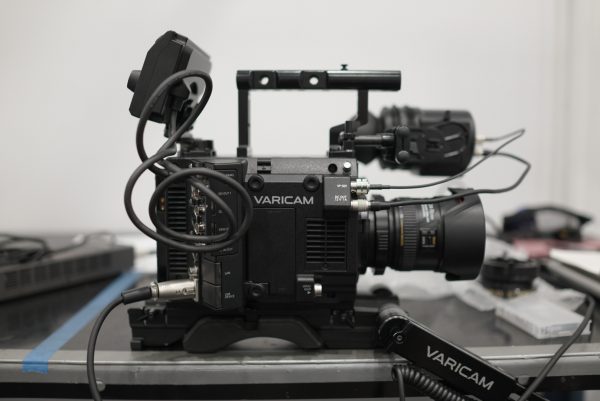
The VariCam LT will be available at the end of March in two packages, either body only for $18,000 US or with Panasonic’s U-VCVF10G OLED electronic viewfinder (EVF) for $24,000 US. The base price for a working camera including the Panasonic EVF, shoulder pad, grip and arm, as well as a couple of media cards will set you back close to $30,000 US.
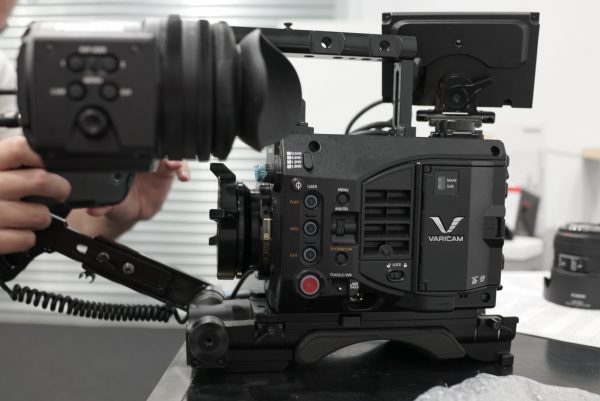
The Varicam LT faces tough competition at this price. The Sony F5 (body only) retails for around $16,500US, and the Canon C300 Mark II is $15,999US. You are however getting Varicam 35 performance in a compact camera body. I think this camera is more squarely aimed at Arri and RED than it is at Sony or Canon. We’re keenly anticipating getting our hands on one to try out.
Camera head list price $18,000 US
Panasonic viewfinder $6,000 US
Shoulder pad $1,500 US
Grip and arm $1,250 US
PL option $1,300 US
256GByte ExpressP2 Card $2,000 US
Varicam LT photos courtesy of Jason Wingrove
